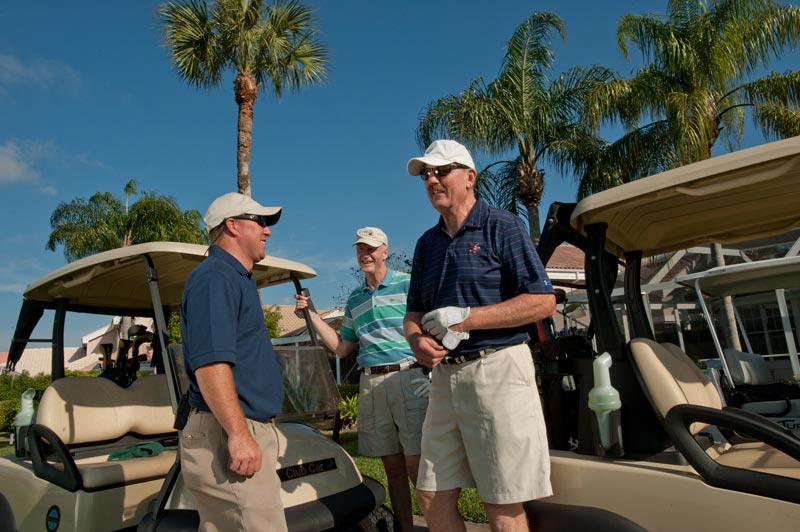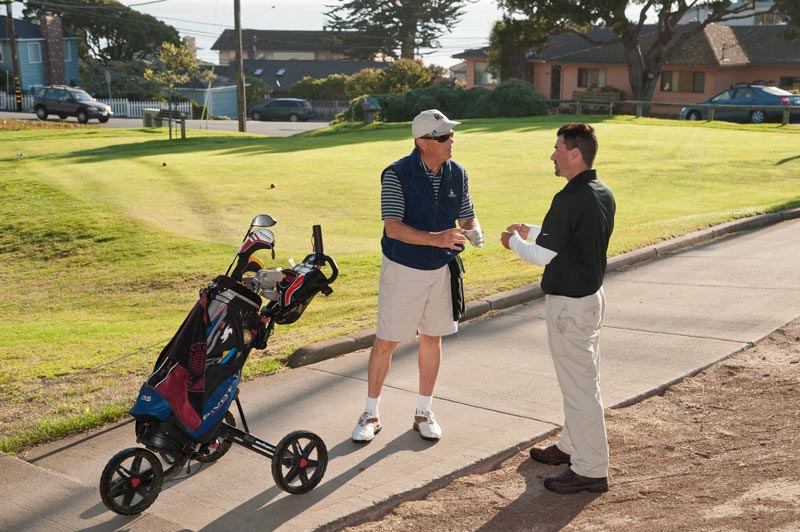
In today’s world, information that supports whatever point a person wishes to prove is at their fingertips. Photo by rawpixel/Unsplash
Golf course superintendents face a wide array of challenges, and many of those challenges now show up on our computer screens and smartphones. Some of the typical challenges superintendents face are predictable — they can be planned for and controlled. Other factors are out of our control and are less predictable. Such is the life of a superintendent who has learned to deal effectively with challenges and who is committed to environmental stewardship in the process.
In golf, if you don’t maintain your skills — or your course — it all falls apart very quickly. Keeping your game sharp requires a consistent commitment to refining skills. If you don’t maintain a rigorous training plan, then it becomes harder to recover skills once they are lost.
However, over the past decade, many people have ignored a critical part of the game of golf: the social license. In order for us to enjoy the open air and green space, our communities — including the non-golfing community — must be on board. One major obstacle to the public’s acceptance is the overwhelming presence of information — much of it filled with inaccuracies and agendas — that criticizes the game and questions our commitment to sustainability.
The result is an erosion of the social acceptance of our industry, as critics become loud yet unopposed. Their voices influence a community that is unsure what to believe or whom to trust.
What motivates misinformation
Call it what you want — fake news, pseudoscience, science denialism, propaganda. The fact is we are bombarded with this misinformation daily, and some of it impacts the golf industry.
Even if you insist that you ignore all of this misinformation, your golfers, club members, board members, residents, tourists, neighbors, parents, planning committees and local governing agencies do not. In fact, some probably embrace it, especially if they have an ax to grind with golf. If they want to find “facts” that support their opinion of what a golf course should and shouldn’t be allowed to spray, spread, water, mow, prune, plant or grow, their access is unlimited. All we have to do right now is mention glyphosate on social media, and the whole world lights up. That is just one recent example.
Here’s the problem: confirmation bias. The internet provides motivated parties a chance to search a topic until they find information, situations and friends that share their opinions or biases. These parties naturally move toward the data and pieces of information that support their own opinions and biases. All of us have these tendencies.
In the past, you had to work at it — talk to an expert, read a book, go to the library, consult with scientists, do your own research or something that actually took some effort and, perhaps, had some credibility behind it. In today’s world, it only takes a click of a mouse to become an “expert” on pesticides, the environment, golf course management, property values, fertilizer runoff and groundwater contamination. Whatever topic and whatever point you wish to prove is at your fingertips. It requires little effort, sources don’t have to have any credibility, there is no cost, anyone and everyone has access, and no one is ever held accountable.

Developing both a strong rapport with golfers and the ability communicate effectively about complex agronomic and scientific topics is essential for the modern golf course superintendent. Photo by Montana Pritchard
So, if you are an advocate or an activist, finding information to support your cause is easy, even if it is not legitimate evidence. Additionally, advocates can use shocking or provocative headlines to get the public’s attention and reference authoritative sources that enjoy widespread readership and acceptance as fact. Then simple, factual information about how you use pesticides, water, fertilizers and energy can become distorted and used in ways that paint a negative picture of what we do. Two recent examples on social media have been the amazing number of articles and posts regarding glyphosate and bee kills.
As a result, superintendents may be asked questions on the golf course that are hard to address. We see articles in the local newspaper that cause public concern, and we are subjected to local regulations that have no merit, and these can create an overall negative image of how we manage a golf course environment.
So, how can legitimate, evidence-based information compete against nonsense? Where do we turn for help on these issues? How much time should we spend as an advocate for the truth? How do we know the information we have is factual? Do we have an obligation to respond?
These are all valid questions, and the answers aren’t always clear. But there are certainly some key points to consider about your role and about how you react to the firestorm of negative information frequently focused on pesticides and fertilizers.
Communicating science and risk is not like talking about sports or the weather. It requires some specific concepts if your efforts will be accepted by the public and effective in molding understanding of controversial topics.
The public vs. scientists: Points of difference
The question then becomes how we step out of our offices and advocate for science and provide honest answers to a concerned public. According to results from a Pew Research Center survey (Figure 1), more than 70 percent of those interviewed perceived scientists as knowledgeable and trustworthy, and they believed science had a positive impact on the life quality and health of our society.
However, when it comes to subjects like pesticides and genetically modified foods, there is a gap of 40 and 51 points difference between scientists and the public (Figure 2). This raises a prominent issue, as it points out that the public doesn’t trust the scientific evidence. It looks like all the information from reputable sources is falling on deaf ears.
How do we gain trust so that the right evidence reaches people who are just looking for answers to their concerns?
We must start by changing how we approach science communication and overcome the confirmation bias. Sadly, scientists and superintendents typically aren’t good communicators, because we are not usually trained to speak or write for general audiences, and when we do it, we mostly lead with numbers, facts and citations and fail to establish an emotional connection with the audience. Now, you might ask what is wrong with that, because we were trained to follow the evidence, and all we want is the public to make decisions based on science and reason.
Well, that’s our first mistake. There is nothing wrong with numbers. In fact, it is extremely important to lead with good ethics and transparency by showing the real evidence. But as explained by the influencer Adam Grant, if we want to change deeply rooted beliefs, we have to gain the public’s heart first. Some might think this is futile, but by establishing a rapport with the public, we show that we are all on the same side, that we all care about the same things, and, more importantly, that we share the same values.
Active listening, intellectual charity and other strategies
But how do we do this? This answer might sound a bit out of the box, but it might be helpful to look for guidance from experts who deal with communication issues similar to ours every day: hostage negotiators and customer service pros. After all, we must persuade an emotional and sometimes irrational and angry public that products such as pesticides and fertilizers are safe and don’t pose any threat to their families.
Good examples and thorough strategies can be found in two books: “Never Split the Difference” by Chris Voss, a former New York City hostage negotiator, and “Hug Your Haters” by Jay Baer, an expert in customer service and marketing. Some of the books’ most relevant advice is:
- Practice active listening.
- Let them say “no.”
- Practice intellectual charity.
- Answer to criticism with class.
“Active listening” means listening to understand, not to debate. This is extremely important, because when someone feels heard, they feel cared for and more at ease, making them more open to accepting what you have to say.
Voss admits the second strategy — let them say “no” — may seem like a contradiction, but he explains that the word “no” is actually an icebreaker and the start to a good conversation process, because “it provides a temporary oasis of control.” According to Voss, this strategy works because all humans need autonomy and need to feel empowered and in control. Preserving your counterparts’ autonomy calms their emotions and opens them up to hearing your proposal.

The public’s perception of how golf courses use water, pesticides, fertilizers and energy can become distorted, and superintendents are often on the front lines when it comes to communicating with golfers about the industry. Photo by Montana Pritchard
The practice of intellectual charity — also known as “stepping into other people’s shoes” — implies approaching their arguments carefully and conscientiously, thus making the other party feel valued and, eventually, allowing us to change their ideas.
Answering our critics with class is especially relevant when dealing with social media, where it takes only one click to reach millions of people. Baer explains that the internet is a spectator sport: For every comment we see posted, there are thousands of other people who read it without reply. The way we respond to attacks can make a real impact on our image and credibility, determining whether we are gaining supporters or haters.
And certainly the most important thing to keep in mind when communicating science outside our little circle is that we all share common dreams: progress and well-being for us, our families and our peers. Influencer Chana Messinger, in explaining how to argue when trying to change someone else’s mind, says reaching for commonality “keeps us rational, reminding us that we’re arguing against ideas, not people, and that our goal is to take down these bad ideas, not to revel in the defeat of incorrect people.”
Instant access to bad information has created a consumer we must actively manage. It is not a choice, but a new responsibility of the industry. Maintaining public opinion must be an active process, on par with maintaining putting greens and bunkers. Like any issue on the golf course, if we ignore it, it will simply get worse with time and require greater intervention later. Social license and freedom to operate are no different. We need to reach constantly for the best tools to help shape public opinion and to share our common interests in environmental stewardship, safe family activities and love of green space.
Liliam Martinez Bello, a science advocate and communicator in Atlanta, has a Ph.D. in biotechnology and is a research scientist with more than 13 years of experience in molecular biology. Rick Brandenburg, Ph.D., is a William Neal Reynolds Distinguished Professor in the Department of Entomology and Plant Pathology at North Carolina State University, Raleigh.